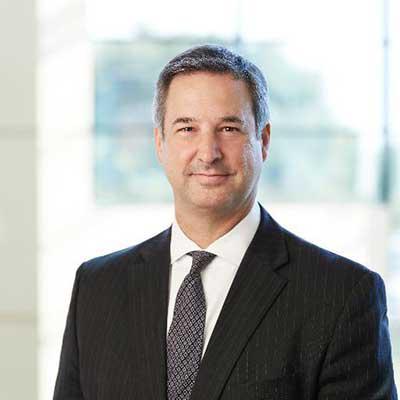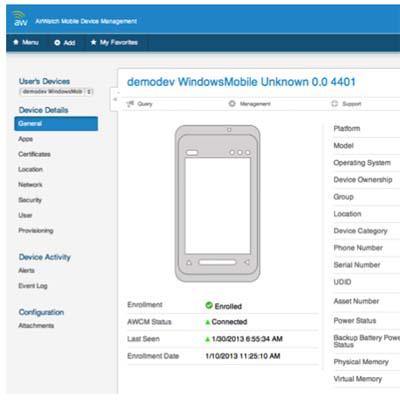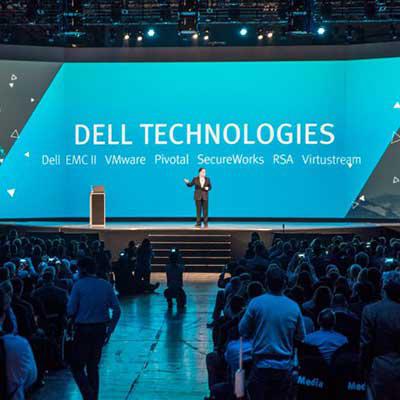Dell EMC President Haas On Fixing 'Inappropriate Behavior' In The Field, Expanding VMware Engagement And Nutanix Partnership

Haas On The Record
Dell EMC President and Chief Commercial Officer Marius Haas says the company is moving aggressively to reduce channel conflict by terminating direct sales reps who violate deal registration rules of engagement.
The stepped up campaign to eliminate 'inappropriate behavior' by Dell direct reps has led to an led to an 80 percent drop in deal registration escalation, said Haas.
"Well there's training, awareness, but also holding people accountable. In some of these instances you have to have a few examples that people look at and say, 'Oh God, these people are serious. They're not just saying it,'" said Haas, in an interview with CRN.
Haas also discusses expanding Dell EMC's VMware sales partnership, its growing Nutanix relationship and the impact from a global economy with a 'higher degree of confidence.'

Dell saw an 80 percent drop in deal registration channel escalation. How did you do this?
Well there's training, awareness, but also holding people accountable. In some of these instances you have to have a few examples that people look at and say, 'Oh God, these people are serious. They're not just saying it.' So we have a saying internally, 'Our say-to-do ratio needs to be extremely high on the do side.' So where they were examples of inappropriate behavior we just said, 'No more.' People saw it and [understood] it. … If it's unpredictable in how we engage, then it's hard to get the full trust of partners. That's what we want to achieve.

What kind of penetration have you seen with the Dell-VMware integration on the partner side?
In August, we made it so partners can now buy VMware directly from Dell EMC. We've seen some very good success from that. Huge uptick there. We will expand that this year [into other countries]. That's part of what partners have asked for, 'Make it easier for me to buy Dell Technologies assets all in one place, and simplify that whole procurement process.'
What about financial incentives? If a partner sells Dell infrastructure and VMware, shouldn't they get higher profitability?
Yes. So your point about thresholds of programmatic elements, 'How do you move from Platinum or Titanium, up to a Titanium Black ecosystem?' Yes, the intent is to be able to go across the portfolio and you get credit for all the revenue generated across the portfolio.

What impact has that "uptick" had on VMware attach rates with Dell servers?
We've exceeded our expectations. Part of it also was, 'How do we help our own sellers to be able to sell the full portfolio?' We didn’t have all the mechanism in place at scale. So this was a mechanism to allow us to do that, plus we also had many partners buying from us direct that wanted to buy the whole portfolio, yet they have to still go to VMware. We said, 'Why don't we just simplify all of that?' … It allows partners to quickly get the whole portfolio, one stop shop, one contract and go. This is all around, 'How do you align the simple to do business with ecosystem for all of Dell Technologies?' Which wasn’t there before.

What kind of traction are you seeing from the Nutanix partnership?
It has grown. It's going well. They're trying to move into a more software-oriented company. Then they're looking to say, 'If I have to recommend to a customer what will be the hardware platform that is the best solution.' What they're finding out is the Dell partnership is a very favorable partnership because of those elements, especially if they're moving into a software orientated company. So why not be the strongest partner with the strongest infrastructure provider especially with the momentum we're having in our server business today.

What's a big partner pain point that you're trying to solve in 2018?
As soon as you create a program that partners realize is very beneficial to them, that's when the true authentic conversation happens which is, 'Hey, this is what we still need you to work on.' Before [Global Channel Leader] Joyce [Mullen] came on board, we had a few partner advisory board sessions where they called us out on the operational issues. It was good to hear because, one: you realize that you're never done. Two: you realize that you can prioritize what you need to do to execute against based on the pain points they're seeing. I anticipated I was going to see friction on the engagement side on the client business – no, that wasn't the case. What they were telling us is the operational work that we needed to do was on the storage side. We've got to get faster at getting quotes out, faster at giving deal registration to the partner, faster at giving pricing, we got to get better and more aggressive on our pricing. We heard these loud and clear.

Has the global economy impacted how partners feel about their business or how much customers are willing to spend?
In every geography you look what the forward-looking GDP's expectations are – it's all growing. What you typically see is that early phases of that higher confidence are investments in infrastructure. Because everyone says, 'Well I got to take advantage of that growth that' happening in the market, but I can only do it if I'm ready to take advantage of it.'
Across Europe, including Middle East, Africa and Eastern Europe, we're seeing very healthy growth. There's just a higher degree of confidence in the overall macroeconomic environment than there had been in the past. In the U.S., we see healthy growth in our small-medium business because there's more money they can put into scaling the business. This is very consistent around the world. Typically, you take a point in time, and you've got two or three markets where you're just holding on, but we feel pretty good about where things are at.

What's the advantage for Dell of having a $4.5 billion R&D budget this year and how will it accelerate innovation?
The investments we're going to make are in that $4.5 billion and above range is for across the Dell Technologies portfolio. The more we align our team members in how we can best leverage their capabilities and solutions into a more integrated solution set that translates to value to customers, the better off we are. It's all about time to value. It's all about reducing cycle times for delivering more to our customers. We're taking that same philosophy and distilling that down into every single one of our R&D organizations so that there's greater collaboration, greater integration and there's much greater leverage of the talent we have across the board. You're going to see that translate into great benefits to the customers.

What impact will your new infrastructure leader, Jeff Clarke, have on product innovation in 2018?
Jeff Clarke (pictured) [vice-chairman, Product & Operations] has a long history of really speeding up the innovation cycles. Speeding up the time to value. Driving simplicity in what we do. We've had complexities that are less optimal from a velocity perspective, especially when you have to go support multiple platforms that are trying to do things in parallel. He'll drive the simplification. He'll drive that time to value for customers as a core tenant of the R&D organization. You'll get a lot more out of the capacity capabilities that you have in play because you created a much more leveraged ecosystem. That's the exciting part. It doesn't happen overnight. His first announcement, about 60 days into his new role was about, 'Have I aligned our people in such a way that they can be the most productive possible in getting that time to value?' That's now done. It's now about translating that into the market. The team has some very exciting announcements that will be coming out throughout the year.

Are partners moving quick enough to hit the new storage quotas?
We added a lot of storage specialist and quite a few storage enablers in the channel. All of those into the tune of, just within my commercial business, of well over 800 around the world. Those are people all coming online, all getting productive, and all of that will be an upside benefit in addition to all the other operational improvements that we're seeing. I feel very bullish about the momentum that we're generating in the storage space.

Have you seen an uptick in channel storage sales since the new hires?
It's starting for sure. It was a refuse to lose approach. We've seen good momentum starting to build.
Are people buying more storage or do you have to steal share to grow?
It's pretty heathy. Maybe these are purchasing cycles that happen over periods of time. We saw pretty healthy high-end growth, very healthy converged, hyper-converged growth, midrange is a battle ground as you can anticipate. We feel good about our position.

What's another new storage investment that you made that's helping partners?
It's one thing when your servicing a handful of customers and you take a high strategy – high list price, high discount model – it works well in the enterprise. But when you have a high velocity transactional engine, you got to make sure then when the decision-making cycle is much shorter, you make sure you have the right product, at the right price point, and well-articulated from a value proposition standpoint.
We really didn't do a good job of making that available, for example, for my commercial space. So we did what we've done for all the other product lines, create a Center of Competence for storage. So now we have the ability to go get a much more scaling engine that ensures that every day, you know you have the right product, in the right position, at the right price point. It's something we do every day around the world for PCs and servers, it was a natural extension to bring it into the storage ecosystem. Just having that cadence and disciplines will make night and day differences for partners.
It's not changing the vision of our architecture strategy, but it's dialing every other level to make sure we get there faster and more efficient. It's a big difference.

What's the biggest challenge in the software-defined, hybrid cloud, solution selling area in the channel right now?
On our side, it was a little of a swivel chair configuration for our reps in the sense that we had disparate configuration tools to go quote a hyper-converged solution, for example, and it was inconsistent around the globe. All of that is being fixed. That's part of two big companies [Dell and EMC] together – one was an SAP engine [EMC], the other was an Oracle engine [Dell]. We're going to have that fully integrated for the sales makers in March, which will allow us to get it much quicker and to a much better and broader audience.
The other thing that we did was the VxRail ecosystem, for example, transitioned to a Dell-server architecture model. We did that for the main markets, but we didn’t do it around the globe. Now it's coming around the globe extremely fast.

How important is the Dell Technologies security portfolio and what are you doing to drive transformation for partners?
Let's look at AirWatch and VMware, for example, if you think about it, when you have a virtual network that only exists when it needs to transport a single bit from Point-A to Point-B and as soon as that transmission's been made, that network doesn’t exist anymore – how do you hack a network that doesn't exist?
Then [VMware's] AppDefense -- those are just three assets within the VMware portfolio. Then you go to RSA and go down that list you say, 'We can actually completely monitor your whole network ecosystem with SecureWorks.' There's absolutely an opportunity for us to take this whole thing end-to-end and show you how to secure every device, every application on that device, secure the transmissions, secure and monitor your infrastructure – it's endless around what we should be able to do with our partner ecosystem around those. The only inhibitor is our ability to scale it faster. It's the communication. So instead of doing a product-level discussion, 'Hey let me talk to you about AirWatch,' it's, 'Let me talk to you about the full ecosystem.'

What is your message on the Dell EMC security sales strategy to partners?
Everybody's got that quilt of security companies slide. There's thousands on one page of all their different security components. Part of what we still need to do is help deconstruct it and simplify that view. It's all still kind of, 'Let me go patch this particular problem I have' versus taking a more holistic piece. People are still reactive to situations versus learning to be proactive to a security approach.

Why should partners be selling Dell Technologies full portfolio?
The portfolio is what matters. With the customers we have, when they fully comprehend the capabilities that come together – everything from being able to do native cloud application development, data migration on any cloud, any application, with a complete software-defined data center solution on the most comprehensive infrastructure provider -- all of that coming together is the big value proposition. There is not a customer that doesn't want to engage us today. That's the big differentiation. The channel team members are seeing it as well. They said, 'If I'm going to bet on someone, I'd be stupid not to bet on Dell Technologies. I'd be lost.'
So how do we bring a more solution orientation to our customers? How do we help solve a greater set of their business challenges? This is why we're always on the conversation of our transformation stories --- digital transformation, workforce and security – it all fits under that umbrella.